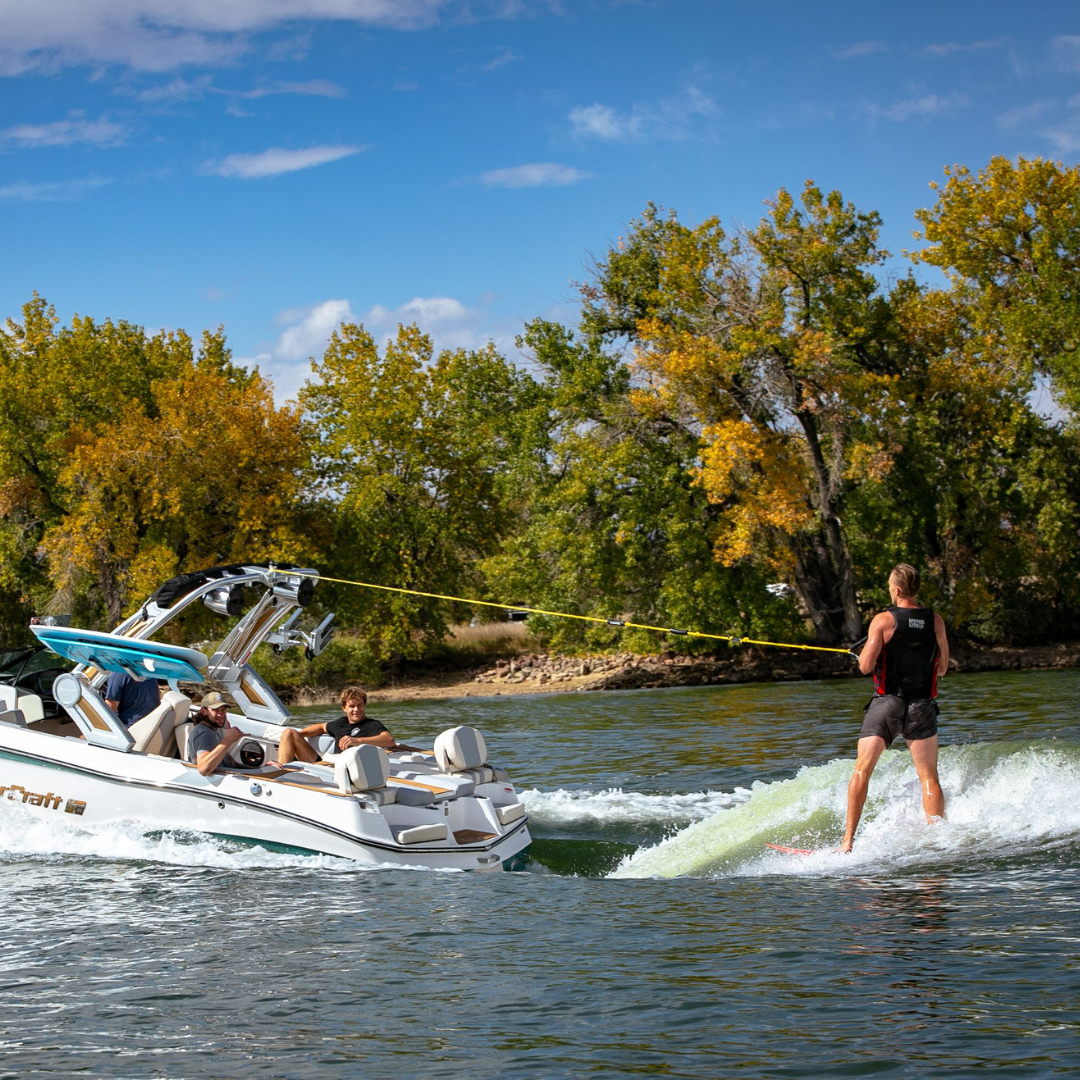
How to Set Up Your Wave for the Best Wakesurf Performance
Share
If you’ve ever been out on the water and felt like something was off with your wakesurf session, even with a great board under your feet, you’re not alone. The truth is, a killer ride isn’t just about the board; it’s about the wave your boat creates. At Smith Board Co., we focus a lot on designing boards for speed, air, and agility, but the boat setup is really what shapes the wave you ride. Getting that wave dialed is the foundation for unlocking your board’s full potential and having the most fun on the water.
Why Ballast Placement and Weight Matter
Ballast isn’t just extra weight you add to your boat, it’s how you sculpt your wave’s shape, size, and push. Most wakesurf boats recommend anywhere from 800 to 1,800 pounds of ballast for optimal conditions, though this depends on your specific boat, your weight, and your riding style.
Where you put that ballast makes a huge difference. If you load it toward the stern, or tail, you’ll get a steeper, chunkier, and more aggressive wave. This setup gives the wave a stronger push, creating a powerful face that’s perfect for launching big air or landing technical tricks. The downside? The “sweet spot”, the part of the wave that’s ideal to ride, tends to be shorter, so you need to be more precise.
On the other hand, putting ballast toward the center softens the wave, stretches out the sweet spot, and creates a mellower, more forgiving wave face. This is great if you want smoother carving or if you’re learning new tricks since you get more room to move without losing the wave’s push.
Many riders like a balanced setup, splitting ballast roughly evenly between stern and center. That way, you get a versatile wave that offers both power and flow. The best way to find what works for you is to experiment, add or shift weight in 100 to 200-pound increments, starting light and adding ballast until the wave feels just right. Just keep in mind that too much weight can make the boat sluggish or overly steepen the wave.
Finding the Right Boat Speed
Boat speed plays a big role in shaping your wave, it controls how long, steep, and powerful the wave is. Most wakesurfers find their ideal speeds between 10 and 12.5 miles per hour (16–20 km/h).
Slower speeds around 10 mph produce shorter, steeper waves that are punchy and perfect for tricks that require quick turns and big launches. Faster speeds, closer to 12 or 12.5 mph, stretch the wave out longer and smoother, which is great for pulling more tricks and beginners.
Heavier riders usually need to run slightly faster speeds to generate the same wave shape and push that lighter riders get at lower speeds. And while many newer boats have auto-speed controls that keep your speed rock-solid, if you don’t have one, it’s best not to guess. Use a GPS device or a smartphone app to monitor your speed and keep it consistent, this consistency is key to dialing in a great wave.
Wake Shaping Devices: Wake Gates vs. Surf Tabs
Your boat might have wake shaping tools that let you refine the wave beyond ballast and speed, typically wake gates and surf tabs, and though they both affect the wave, they do it in different ways.
Wake gates adjust the angle of plates or flaps behind the boat to control water flow. By opening or closing them, you can smooth out chop and sharpen the wave face, essentially cleaning up the wave and making it easier to ride. While they help with wave shape and cleanliness, wake gates don’t make the wave bigger.
Surf tabs, usually mounted lower and farther back on the boat’s transom, push water down on one side, which boosts the wave size on the opposite side. They add power and height to your wave and are great when you want a bigger, more energetic wave.
Many boats have both, so you can use wake gates to clean the wave face and surf tabs to add size. Even small tweaks in these controls can transform your wave from good to great.
How Passenger and Gear Placement, and Other Factors, Affect Your Wave
You might not realize it, but where your passengers sit and how you store your gear can change your wave just as much as ballast does. If you have people on board, have them sit where it complements your ballast setup. For example, if you want a tail-heavy wave, passengers should sit closer to the stern. If you want a more balanced or center-heavy wave, spreading passengers evenly or placing them toward the middle helps.
Gear matters too. Coolers, bags, and other equipment add weight that can shift your boat’s balance. Try to keep heavier items near ballast tanks or other areas that help maintain your desired weight distribution. Avoid loading heavy gear near the bow or unevenly across the boat, as this can upset your trim and negatively affect the wake.
Remember, every boat is unique, from hull shape to ballast system, so these tips are general guidelines. The best approach is to test by shifting passengers and gear bit by bit, and watch how your wave changes.
Water conditions matter, too. Shallow water can cause your wave to break too soon, and wind can add unwanted chop on the surface. Adjusting your timing or setup can help counter these effects.
Lastly, boat trim, how your boat sits front to back, affects wave shape. Many boats have hydraulic trim systems or trim tabs that let you tweak this angle. Fine-tuning trim can improve wave quality, especially when conditions change.
By paying attention to all these factors, passenger and gear placement, wake plates and gates, water conditions, and trim, and making small adjustments, you can keep your wave consistent, clean, and perfectly tuned for your ride.
Crafting Your Perfect Wave
Dialing in the perfect wakesurf wave is about balancing a lot of moving parts. Start with ballast placement, try beginning with about 1,000 pounds split between tail and center tanks. Adjust in 100 to 200-pound increments to feel how the wave changes.
Lock in your boat speed with an auto-speed system or GPS. Find the speed where the wave feels stable and powerful, usually between 10 and 12.5 mph, adjusted for your weight and board style.
Use your boat’s wake shaping devices: adjust wake gates to smooth and clean the wave face, and tweak surf tabs to add power and size as needed.
Don’t forget passenger seating and gear placement, which can subtly refine your wave.
Every boat is different, so the best way to find your perfect wave setup is to get on the water, experiment, observe, and fine-tune until it feels just right. When your wave is dialed, your board’s speed, air, and agility come alive, making every session smoother, more consistent, and more fun.
